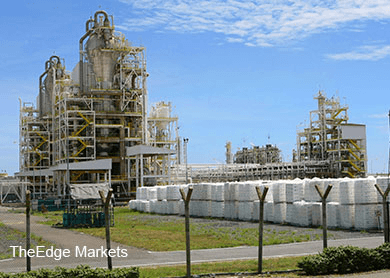
KUALA LUMPUR (Jan 21): A drop in crude oil price to US$40 per barrel could result in many producing wells to be shut in, according to global energy, metals and mining research and consultancy group Wood Mackenzie (WM).
A that price level, about 1.5 million barrels per day (bpd) of production would be "cash negative", meaning it wouldn’t even make sense to continue pumping at most marginal wells, said Nick Cunningham writing for Oilprice.com portal.
Citing the WM report, Cunningham said these “stripper wells,” which only produce 15 barrels of oil per day or less, have high costs given their level of production.
Wells producing such a tiny flow of oil may seem like a nonissue, but with hundreds of thousands of them dotting the country, they collectively account for about one-tenth of US' production.
“As these wells become unprofitable, production should start declining,” he said.
However, the WM report observed several emerging trends beyond the simple narrative that low prices would force a cutback in drilling.
Larger projects, for example, faced a complicating set of factors that could slow drilling, but not as fast as some think.
This is because slowing activity is also pushing down the rental rates that drillers pay for rigs.
“With weak demand, drillers can negotiate down rig prices. This leads to lower costs, helping drillers stay in the game,” said Cunnignham.
He said another interesting twist from lower oil prices is the fact that the economics of natural gas production have been relatively enhanced.
“To be sure, natural gas prices are also low, but over the last several years, the revenues generated from a barrel of oil were so much greater than the equivalent form of energy in natural gas.
Cunningham said that for the equivalent amount of energy, natural gas priced at US$3 per MMBtu was equal to about US$17 to US$20 per barrel of oil.
“That is still significantly lower than the US$50 oil is trading for now, but the disparity is not nearly as severe as when oil was trading for US$100,” he said.
“With that said, the fact is that oil and gas are often produced in tandem, so a drilling cutback could hurt the gas patch as well.
Cunningham said another intriguing trend forecasted by WM was the resilience of offshore oil in the Gulf of Mexico.
He said the offshore wells were much more expensive, had much longer production lives and long lead times, making cutbacks less feasible in the short run.
“And unlike shale wells, production is steady and can last decades, so the current period of low oil prices won’t worry corporate executives who take a long-term view.
“As a result, while rigs start vanishing from shale regions, they should remain steady in the Gulf,” he said.
Cunningham also noted rising US oil production which
ticked up an extra 60,000 bpd to 9.19 million bpd in the first full week of January, according to the Energy Information Administration data.
“Wood Mackenzie predicts that the industry will continue to consolidate and focus on the most profitable areas while finishing up projects still in the pipeline.
“The thousands of oil wells across the United States are not uniform. The collapse in oil prices is hurting pretty much everyone, but some areas – core shale regions, and the Gulf of Mexico – will weather the storm better than others,” he wrote.